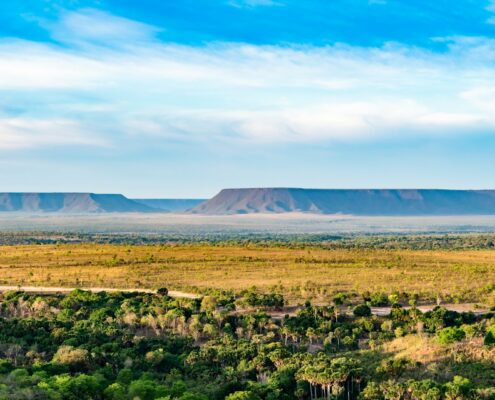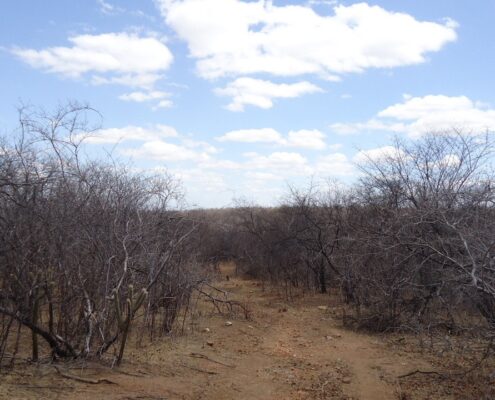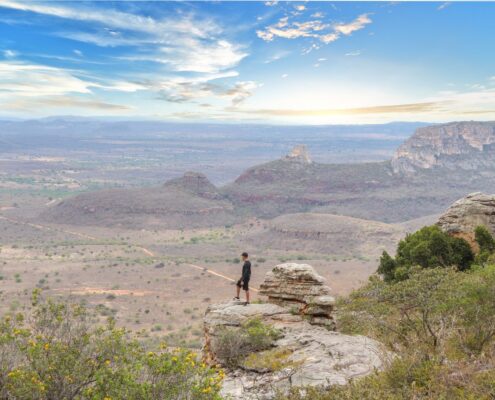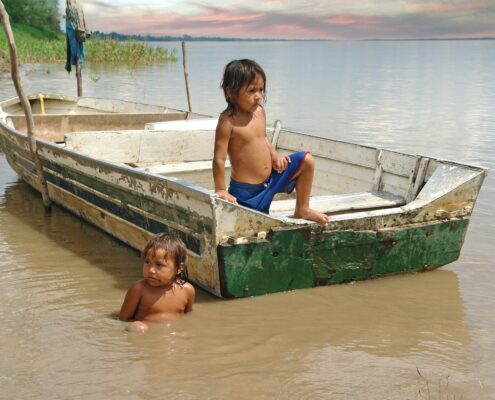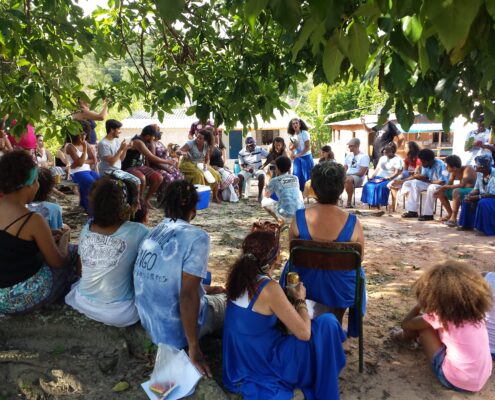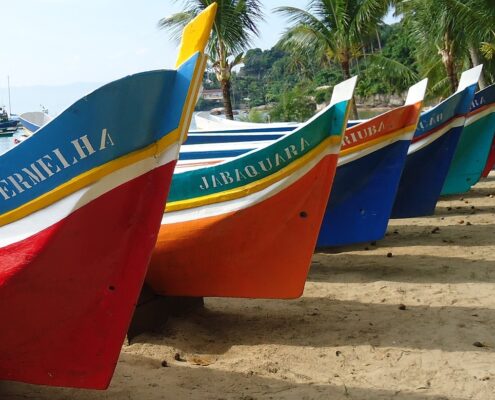 https://greenmarked.it/wp-content/uploads/2024/07/Cattura-1.jpg
880
1618
Sarah Santos Ferreira
https://greenmarked.it/wp-content/uploads/2022/01/LOGO-GREENMARKED-SITO-600x600.png
Sarah Santos Ferreira2024-07-16 18:56:142024-07-16 19:45:21Three Environmental Initiatives Making a Difference in Brazil
https://greenmarked.it/wp-content/uploads/2024/07/Cattura-1.jpg
880
1618
Sarah Santos Ferreira
https://greenmarked.it/wp-content/uploads/2022/01/LOGO-GREENMARKED-SITO-600x600.png
Sarah Santos Ferreira2024-07-16 18:56:142024-07-16 19:45:21Three Environmental Initiatives Making a Difference in BrazilApril 05, 2023
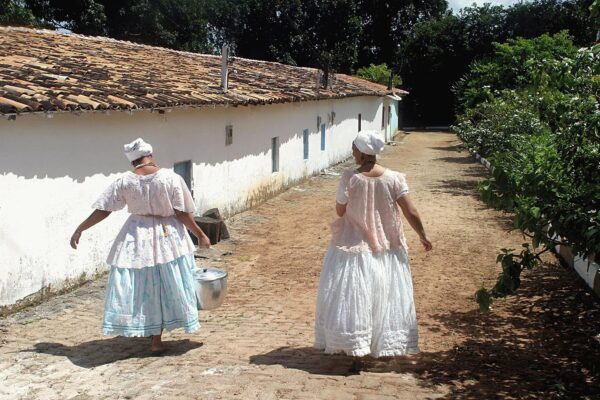
Brazil is a country famous worldwide for its environmental and cultural diversity. Historically, it was the stage of invasions and exploitation by several European countries. Each one left its mark on the Brazilian territory and population: linguistic nuances, festivities, and religious beliefs that distinguish and characterize the Brazilian people in their uniqueness.
One of the most significant cultural impacts of the colonial period was the migration of enslaved African people to Brazil. Coming from different African regions and being sent to several Brazilian states, they sought ways to preserve their identity and culture, and resist the spiritual hegemony imposed by the Catholic Church. They resorted to Brazilian natural resources, and the result of their interaction with Brazilian ethnicities culminated in the formation of today’s traditional terreiro communities.
Terreiros are religious temples of African origin that have specific ethnicity and culture. In Brazil, two religious groups predominate: Candomblé and Umbanda. They have a monotheistic liturgical structure, so they believe in one supreme and unique God, Olórun. But they are also polytheistic, for they believe that beneath God there are other divinities called orixás or orisà. While Olórun is a figure distant from humans, the orixás are directly linked to the mortal world. Each orixá is associated with an element of the natural order: aeolian, aquatic, telluric, igneous, animal, mineral, and vegetal. For example, the forests belong to Oxóssi, the mountains to Xangô, the sea to Yemanjá, and the winds to Iansã. Each element – or deity – has a symbolic meaning of a positive or negative quality of being [1].
Traditional terreiro communities are recognized by National Decree No. 6040 of 2007 for being “communities that have common characteristics, such as the maintenance of traditions of African origin, respect for ancestors, the values of generosity and solidarity, the broad concept of family and a close relationship with the environment” [2].
The sacred value of Nature
Nature is an inexorable foundation of the terreiros culture because the orixás represent the vital energy of the different natural elements and vice versa. The filhos-do-santo (i.e., the disciples of the African-brazilian religions) are taught to revere and respect natural spaces for their intrinsic and sacred value. Furthermore, terreiro communities believe that the flora has deep meaning and value. It is used as fodder in rituals, offerings, and also as resources for healing and purification.
The African ancestors of the terreiro communities were able to adapt their original rituals and customs thanks to their ethnobotanical knowledge. In their new environment, African immigrants identified botanical families that they could use for religious purposes as in their homeland. Until today, this knowledge represent the foundation of the communities. As examples, we can mention akoko (Newbouldia laevis), sword of Ogum/Saint George (Sansevieria trifasciata) and peregum (Dracaena fragrans) [3].
The immigrants’ religious adaptation was facilitated by the flora homogeneity of Brazil and West Africa. At the beginning of the 18th century, many Brazilian species such as maize (Zea mays L.) had already been introduced to African lands. Similarly, African species, such as the Dendê palm (Elaies guineenses Jacq.) had already been successfully brought to Brazil.

Fig. 1: Garments of orixás in the Umbanda terreiro (Rio de Janeiro, Brazil). Photo by Giulio Genova (April 2019).
Ancestral knowledge
Due to their deep relationship with nature, terreiros were established near forests and natural areas. House leaders and their adepts were responsible for preserving the health and conserving the natural resources of the terreiro.
At the same time, terreiros are essential for food security. In these areas marked by social solidarity, it is common practice to distribute food to the community and visit the community areas during rituals (i.e., giras). Thanks to their close relationship with natural resources, terreiro communities highly value human health and diversified and culturally appropriate food.
Due to the urbanization of the Brazilian territory, however, many terreiros were incorporated into urban centers that developed in their surroundings and lost their subsistence capacity. Luckily, in 2013 the Brazilian federal government recognized the cultural importance of terreiros and throughout Brazil began removing several buildings and infrastructures adjoining the communities.
As dictated by African traditions, the terreiro’s traditional ecological knowledge has been passed on orally through generations. But, unfortunately, much of it has been lost as urban spaces and the Brazilian culture have changed over the years. Legally protecting these the terreiros areas and communities will contribute to guaranteeing the continuity and survival of such ancestral knowledge.
Related articles:
References:
[1] Calgaro, C., Teixeira de Souza, A. E., & Sparemberger, R. F. L. (2022). Ashè people: the importance of African origin religions for environment preservation. Retrieved on 4 April 2023, from https://revistas.unaerp.br/paradigma/article/view/1921
[2] Brasil, Ministério da Cidadania – Povos e Comunidades Tradicionais (2007) Retrieved on 4 April 2023, from http://mds.gov.br/assuntos/seguranca-alimentar/direito-a-alimentacao/povos-e-comunidades-tradicionais
[3] Fonseca, N.F. & Balick, M.J. (2017, 2 February). Plant-Knowledge Adaptation in an Urban Setting: Candomblé Ethnobotany in New York City. Retrieved on 4 April 2023, from https://doi.org/10.1007/s12231-018-9405-7
Cover- and preview image: Two filhos-de-santo afro Brazilian disciples walking in the Brazilian Ilê Axé Opô Afonjá terreiro community. Free-source photo by Antônio Milena/ABr – Agência Brasil, CC BY 3.0 br, https://commons.wikimedia.org/w/index.php?curid=2969759

